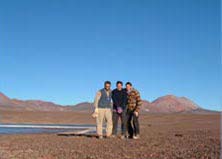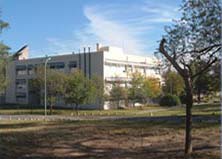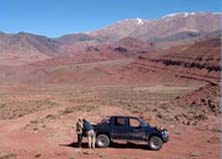The Basin Analysis Laboratory aims to nucleate a high standard national reference team for Argentina´s leading research in Earth Sciences topics and meet the requirements to transform into a central node of basin research in South America.
To broaden knowledge and to develop high quality research in the Central Andean region in order to understand superposed processes and evolution of sedimentary basins through space and time, both of major academic and predictive value.
Participation in international research programs. A must in our lab is that Researchers and PhD students continue to work internationally in cooperation with leading researchers at institutions overseas, particularly to enhance our technical abilities and become more familiarized with modern and sophisticated methodologies. These interaction gives particular strength to our field oriented work.
Encouraging senior visiting scientists to visit us and generate join projects and international cooperation.
Major funding from Argentine governmental agencies. Particular support is given through Projects of the National Research Council (CONICET) the National Agency for Research and Technology (ANCYT) and University Research programs (SECYT-UNC).
Strong support to international collaborative projects achieving common scientific objectives.
Priority for PhD students. Insertion of graduate student projects and undergraduate educational experiences into the different lines of research allowing advanced training and positive feedback on our day after day brainstorm thought process.
Support postdoctoral fellows granted by other sources and encourage them to broaden the lines of research, favouring an enviroment of discussion.
Training programs for PhD students in specialized centers in topics of our interest.
Promoting seminars and workshops in basin analysis, and related topics.
Collaboration with mining, groundwater and petroleum companies is always welcome. The objective is to assist on their exploratory and development projects and to produce a healthy feedback between science and technology. |
| • |
Acquisition, update and production of a data base of sedimentologic, stratigraphic, structural, isotopic and chronologic integrated information for the Andean region. |
| • |
Interpretation of siliciclastic depositional environments evolving through time and space within Proto-Andean and Andean basins. |
| • |
Understanding environments and geochemistry of carbonate depositional systems through time. |
| • |
Evaluation of basin fill parameters for each separate basin and interregional factors governing evolution across and along the Andes. |
| • |
Generation of paleogeographic maps for the Proto-Andean and Andean depozones across and along the Central Andes. |
| • |
Understanding burial processes in contrasted basins, tectonic regimes and geodynamic scenarios. |
| • |
Understanding the short- and long-term influences of volcanism on sedimentation, basin formation and tectonics, and understanding dynamics of volcaniclastic depositional environments. |
| • |
Produce new hypothesis and evaluate current thoughts and application of leading ideas concerning basin evolution and modelling. |
| • |
Evaluate the interactions between basin forming mechanisms, uplift rates and preservation potential in the various Andean and Proto-Andean contexts within the present day segmentation. |
| • |
Assist on the dilemma, tectonic uplifting and climate changes in the Central Andes,
generating new knowledge in areas of critical importance and predict potential source areas for mineralization and hydrocarbon exploration. |
Regular publication in well-ranked and widely circulated international journals of main research results.
Publication of monographic papers and detailed regional work in national and regional journals.
Participation in National and International Congresses and within the PhD Program of Geological Sciences at the University of Córdoba.
Encouraging undergraduate and graduate teaching. |




